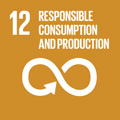- Docente: Francesca De Crescenzio
- Credits: 6
- SSD: ING-IND/15
- Language: Italian
- Teaching Mode: Traditional lectures
- Campus: Forli
-
Corso:
Second cycle degree programme (LM) in
Mechanical Engineering (cod. 8771)
Also valid for Second cycle degree programme (LM) in Mechanical Engineering for Sustainability (cod. 5980)
-
from Sep 20, 2023 to Dec 14, 2023
Course contents
The course of Design Methods in Industrial Engineering is divided into two parts. Part I regards Methods for Conceptual Design of Industrial Products. Part II focuses on Technologies for advanced 3D, virtual an physical prototyping of products and systems. Specifically NURBS 3D modelling, Additive Manufacturing for Rapid Prototyping of parts and assemblies, Reverse Engineering for surface digitalization and XR (Extended Reality) for immersive and interactive visualization of Digital Mock ups.
PART I – METHODS FOR CONCEPTUAL DESIGN
From Product Planning to product architecture and Lay-out
•Conceptual design for industrial products - Models for Product development Cycle- Sustainable Product Design- User centred Design - Design for X • Identification of customer's needs and product specifications • Concept generation and concept selection methods• Product Architecture• Innovation in Product Design-Customization and Sustainability of products-Project Management in Collaborative Research
PART II – Virtual and Physical Prototyping
• Industrial Prototyping for product development• Geometric Modelling and NURBS modelling
• Reverse Engineering
• Rapid Prototyping
•Extended Reality (Virtual, Augmented and Mixed Reality)
Readings/Bibliography
Lecture slides, article or notes provided on Virtuale (unibo.it) [https://virtuale.unibo.it/?lang=en]
Lecture notes will be provided soon before or after the class. Do not download lecture notes from previous years. These may not be update.
For more details on PART I
Ulrich K.T., Eppinger S. D., “Product Design and Development“,Mc Graw Hill.
The mechanical design process / David G. Ullman.—4th ed.Mc Graw Hill
Teaching methods
Class lectures. Case studies interactive analysis. Workshops. Computer based training with Computer Aided Industrial Design tools. Lab demonstrations.
Seminars. Attendance is recommended.
Assessment methods
Students will be divided into teams of 4 students each and will develop a collaborative project work.
During the course intermediate individual or group assignments and deadlines will be given.
For each exam session the group will have to:
-Deliver on the sharepoint (personal link will be provided) the project work material (report + CAD files + other material such as pictures or videos) three days before the exam session. -Perform a 20 minutes group presentation of the project in Power Point on the day of the exam session -Individually answer to 2 oral questions on the theories that are part of the program. -Have completed all the intermediate assignments within the deadline
Teaching tools
Reverse Engineering Systems (Laser and CMM Coordinate Measuring Machines)
Software CAID(Computer Aided Industrial Design) for NURBS Modelling;
Software for Reverse Engineering;
Rapid Prototyping systems (FDM and Polyjet) and Softwares.
Virtual and Augmented Reality Tools.
Office hours
See the website of Francesca De Crescenzio
SDGs



This teaching activity contributes to the achievement of the Sustainable Development Goals of the UN 2030 Agenda.
